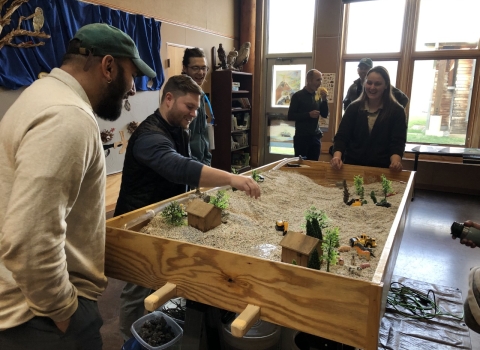About Us
Maryland Fish and Wildlife Conservation Office was established in 1985. We work to conserve and restore fishes and aquatic species in the Chesapeake Bay watershed and Delmarva Peninsula in Maryland and surrounding states. Our priorities are inter-jurisidictional migratory fish, aquatic invasive species invasive species
An invasive species is any plant or animal that has spread or been introduced into a new area where they are, or could, cause harm to the environment, economy, or human, animal, or plant health. Their unwelcome presence can destroy ecosystems and cost millions of dollars.
Learn more about invasive species , and habitat restoration. Some of the key species we focus on are Striped Bass, American Shad, and American Eel.
What We Do
The Maryland Fish and Wildlife Conservation works with partners to conserve and restore American Eel, American Shad, and River Herring through direct population studies and habitat restoration. We work to control populations of invasive Northern Snakehead in the mid-Atlantic region. Additionally, we manage Atlantic Coast tagging programs for Striped Bass, Atlantic and Shortnose Sturgeon and horseshoe crabs to ensure sustainable management of those species.
Our Organization
Projects and Research
Coastal Fish and Crab Tagging Programs
- Striped Bass
- Atlantic and Shortnose Sturgeon
- Horseshoe Crab
Migratory Fish Restoration
- American Shad
- American Eel
Fish Passage and Habitat Restoration
National Fish Passage Program
National Fish Habitat Partnership
Northern Snakehead Control and Management
Across the landscape, undersized, aging and improperly placed road-stream crossings create barriers in our rivers, streams, and tidal wetlands. These structures fragment aquatic habitat and prevent or greatly reduce the ability of aquatic species to move freely to migrate, feed, and reproduce. These poorly designed structures are also more prone to clogging, causing flooding, and washing out...
Get Involved
If you have found a tag from a fish from one of our programs please report it at 1-800-448-8322. If you have a crab tag it can be reported online at www.fws.gov/crabtag









